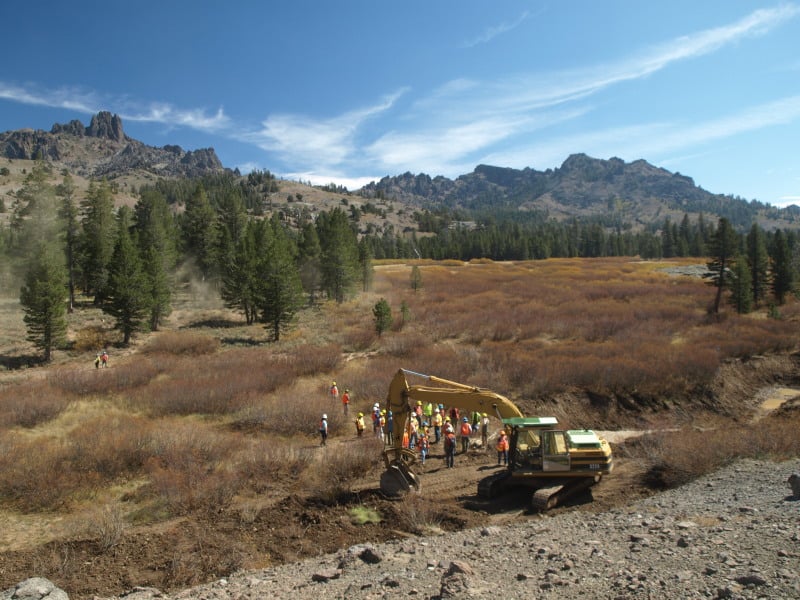I think we really need to start a group toward reforming environmental conflict resolution as currently carried out through the court system.
We need an acronym.. for the time being, I will use REAL for “Reforming and Enhancing Appeals and Litigation” as it pertains to environment and natural resource disputes, particularly in public lands. Other acronym suggestions are welcome. You all have given me ideas, plus others outside this blog have, for ideas and actions that we may or may not agree to support in terms of:
1) Increasing transparency, public participation, and accountability in the resolution of disagreements involving public lands,
2) Through either direct action, or influencing legislation or Administration policy.
So I will be rounding up some of those ideas in the next few weeks.
I ran across these three pieces that help make my case for action:
1. (Litigation does not addressing the real issue). This story is “Feds file litigation to weaken ranchers’ claim” here. Where’s the best available, or any, “science” for that matter? Nowhere to be seen. It seems to me like conflict resolution folks could have been brought in on this to mediate the real issues, which seem to be 18% reduction, and not the Constitution. Likely to be more cost-effective to the taxpayer and more effective. But there could be history here that I’m not aware of, so those who know more, please speak up.
2. (Litigation does not address the real issue) Thanks to Terry Seyden for this one. This was in Forbes. This is a big enough deal that many folks are involved, including timber industry, and SAF (needed to be transparent about that). The same arguments could be made that this author makes,about other tinier projects, only without the broad base of (financial and other forms of) support.
On December 3, the U.S. Supreme Court will consider who is best suited to set national environmental policy – the experienced scientists and regulators at the Environmental Protection Agency or activist trial lawyers.
..
and
The former dean of the Yale School of Forestry and Environmental Studies, John Gordon, worries that, “Injecting permit requirements into this [BMP] process will only make the ongoing upgrade of our [environmental protection] methods slower and more expensive, diverting resources from reducing sediment to the legal machinery of permit review and litigation.” “In this case, environmental activists are not on the side of the environment,” he concluded. The EPA agrees; regulators have insisted for decades that permitting was not designed for—and does not work for—forest road runoff even as state forest road BMPs are widely acknowledged to have proven effective and efficient.
When the Supreme Court convenes on December 3rd, the critical question will be whether 35 years of effective regulation from EPA should be surrendered to America’s lawsuit industry.
To be fair, let’s take a look at this fellow’s background here. He is not one of our experienced folks in this area.. still he doesn’t claim that his opinions are a “scientific report.”
3. (Understanding the intricacies of the legal processes is not always easy, plus not addressing the real issue, plus not clear where the scientific information would lead.) Here is a link.
But Monday, U.S. District Court Judge John L. Kane rejected the settlement. At issue is a provision saying if there is a dispute over the implementation of the document, neither side can be found in contempt of court. The judge ruled that provision exceeds the authority of the two sides and could lead to them not reporting violations of the court order.
Tim Ream, attorney for the environmental group, called it a “very esoteric point” and said negotiations continue on reworking the settlement.
Dirt bike groups, who have funded and carried out maintenance work on the trails for years, have blasted the lawsuit as unfairly singling out dirt bike riders from hikers, mountain bike riders and others they say also impact the creek.
“We are not satisfied with the process to date,” said Don Riggle, president of the Colorado Springs-based Trails Preservation Alliance. His is one of three groups representing motorized vehicle riders that have joined the lawsuit as intervenors.
He said he agreed to a settlement with the Center for Biological Diversity with the understanding the ban would be in place only for the winter months, until the trails could be realigned, but last week’s settlement differed “in principle.” The document includes no timetable for reopening.
Here’s my information question, if three groups are intervenors, do they get to sit in while the settlement is discussed? To an outsider, seems like they should. Could someone explain how that works? ‘Cause otherwise it looks like a pretty closed door to the public.











